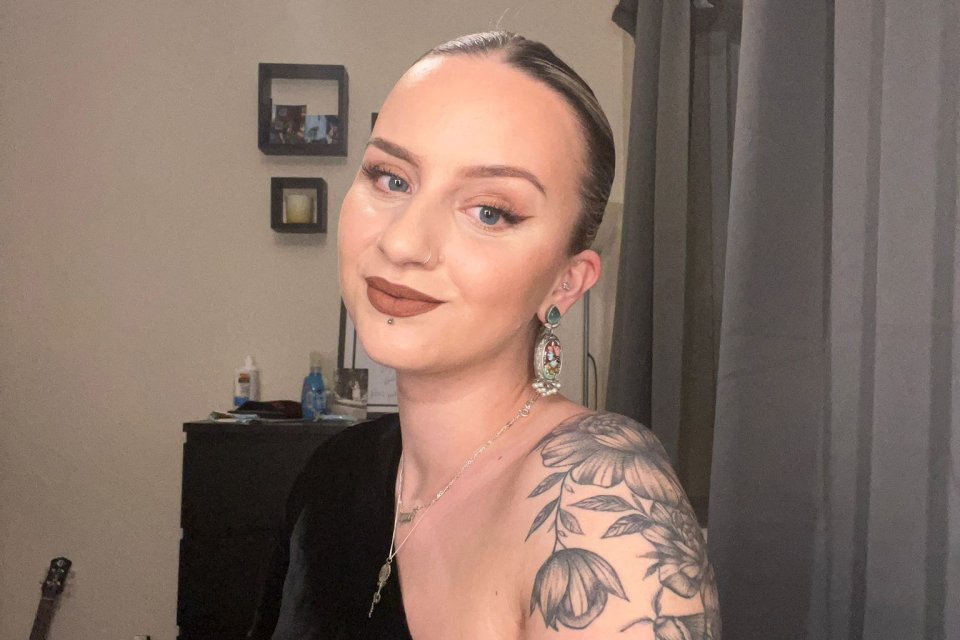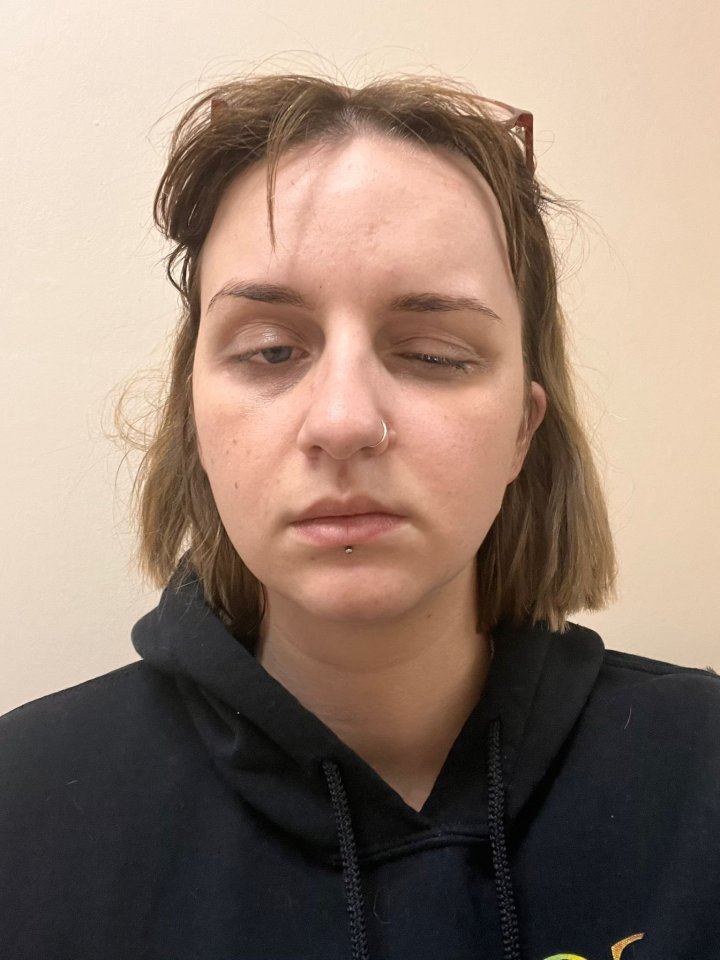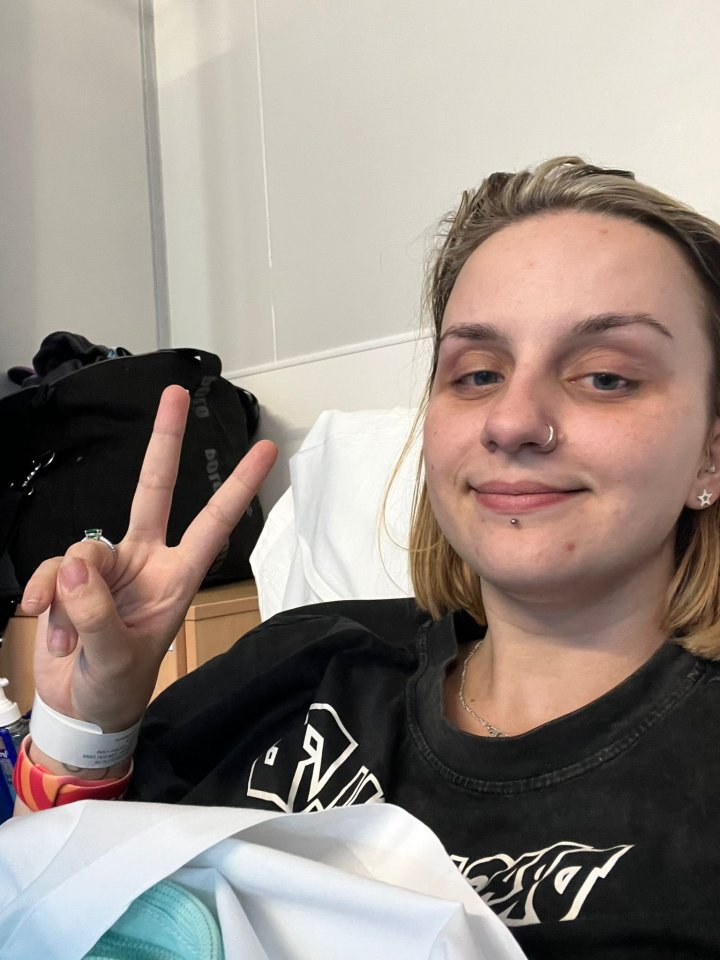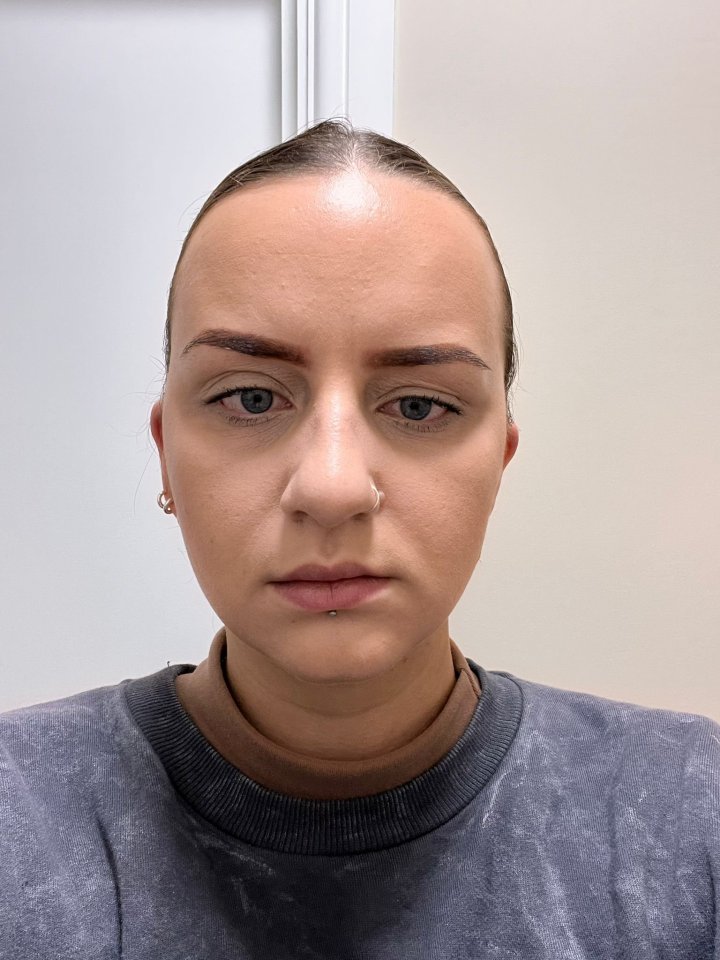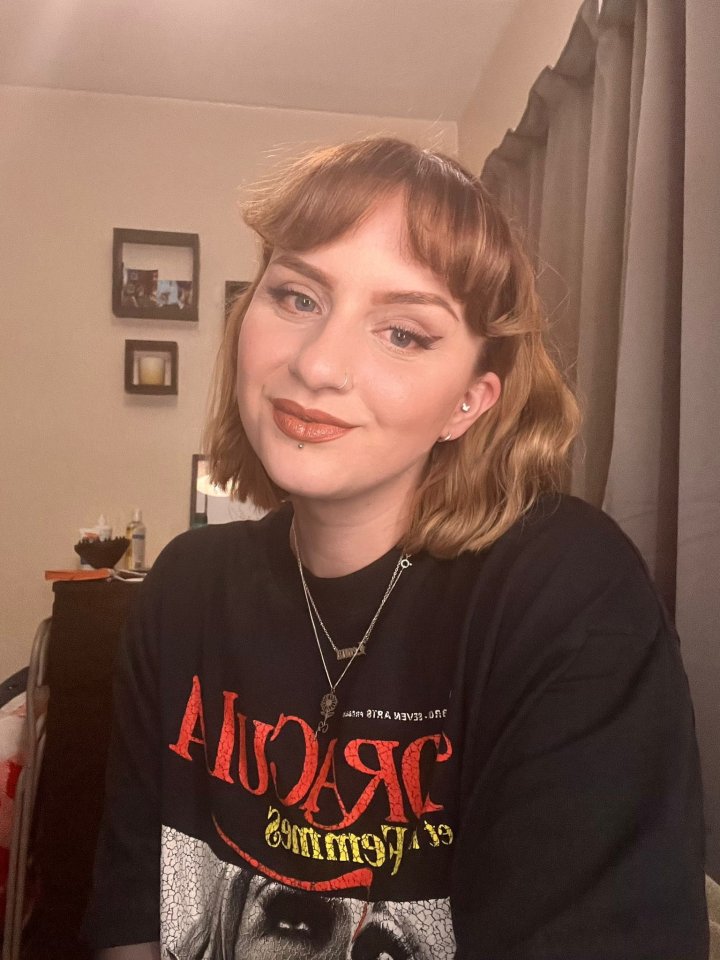LEONA Hargreaves says her rare migraines – so severe they mimic strokes – may one day leave her permanently in a wheelchair.
The 26-year-old dental nurse from Lincoln was at work in 2024 when her world changed.
“I lost vision in my left eye, my left side went weak, and I couldn’t talk,” she said.
Leona’s reaction was so severe her colleagues feared she’d had a stroke.
Her husband Sam, 26, an aircraft technician, rushed her to Lincoln County Hospital.
There, after blood tests and scans, she was diagnosed with hemiplegic migraines – a rare condition affecting just one in 10,000 people.
These migraines cause stroke-like symptoms, also described as ‘imitation strokes‘.
Leona’s attacks leave her with weak muscles and mobility issues, prompting her to use a walking stick during and after episodes.
“Every attack I have, I wonder if it’ll be the one to leave me permanently unable to walk,” Leona admitted.
“Hemiplegic migraines have had such a big impact on my life—I’m so scared they’ll damage me permanently.”
She also fears losing her independence.
“I can’t work full-time anymore and struggle to leave the house to spend time with friends,” she said.
“People think migraines of any kind last a day, and then when the headache’s gone, it’s gone.
“But they don’t realise you can feel the build-up for days, then the actual migraine, then the ‘hangover’ up to a week later.”
Leona’s journey with migraines began at 13 when she started experiencing migraines with blurred vision in her left eye.
They stopped at 16, and for a decade, she thought she was free.
I remember having sheer panic, thinking: ‘Oh my god, I’m going to die’
But last October, while at work, the condition returned with a vengeance.
Thinking another common migraine must be coming on, she didn’t panic at first – but quickly, she lost the ability to walk.
Leona’s left side had gone very weak and her speech was slurred.
“Everyone thought I’d had a stroke,” she recalled.
“I remember having sheer panic, thinking: ‘Oh my god, I’m going to die’.”
Doctors performed CT scans, MRIs, and blood tests, but the results came back normal.
Leona was eventually diagnosed with hemiplegic migraines and referred for further treatment.
Three months on, she experiences debilitating “attacks” every two to three weeks, lasting several days.
“It’s massively affected my independence,” she said.
“I’ve had to reduce my work hours to three days a week.
“I was just having too much time off.”
Leona is now seeking treatment at the National Migraine Centre in London.
There, she’s exploring options such as anti-epilepsy drugs, Botox injections, and a new migraine medication called Vydura to help manage her imitation stroke episodes.
“I don’t want to be taking anti-epilepsy medication if I can help it,” she explained, “so I’m starting on Vydura to help my symptoms.
“You can also take it during the onset of an attack, so I’m hoping it’ll help hugely.”
Despite the challenges, Leona remains determined to reclaim her independence.
“I feel like getting the walking stick means I’ve admitted defeat a little, but it does help me go out and not always cancel plans.”
The 9 signs an migraine is coming

WE all get headaches from time-to-time, but migraines can present a whole host of different issues.
They are debilitating and affect around one in seven people, with some losing up to eight days a month due to the pain.
Dr Katy Munro, from the National Migraine Centre said there are nien ways you can predict their arrival.
- Throbbing
A migraine often starts as a dull ache but can develop into a severe, throbbing pain, making daily activities difficult. Movement can worsen the pain. - Stiffness and pain
The cervico-trigeminal nerve system activates, causing pain to travel to the neck and shoulders, leading to tightness and discomfort, which can trigger a migraine attack. - Fatigue
Fatigue is common before and after migraines, with people experiencing low energy and frequent yawning. Poor sleep, blood glucose fluctuations, and dehydration contribute. - Nausea and vomiting
Migraines slow down the gut, causing nausea and vomiting. They also reduce the effectiveness of painkillers, and children may experience abdominal pain. - Sensitivity
A migraine causes a wave of electrical activity in the brain, leading to sensitivity to light, sound, touch, and smell. Aura symptoms like visual disturbances or tingling may occur before the headache. - Hormones
Women are more likely to suffer migraines due to hormonal changes in oestrogen, which can worsen during periods, pregnancy, and perimenopause. - Mood changes and brain fog
Migraines often cause irritability, depression, and brain fog, which can impact work or school performance. - Dizziness
Dizziness may accompany migraines, particularly with Vestibular migraines, where lightheadedness and unsteadiness occur without significant headache. - Weakness
Some experience temporary weakness on one side of the body (hemiplegic migraine), while others may have speech difficulties, which usually resolve within an hour.
Migraines vary in severity, and while some may only occur once or twice, others can last for days, impacting daily life.
